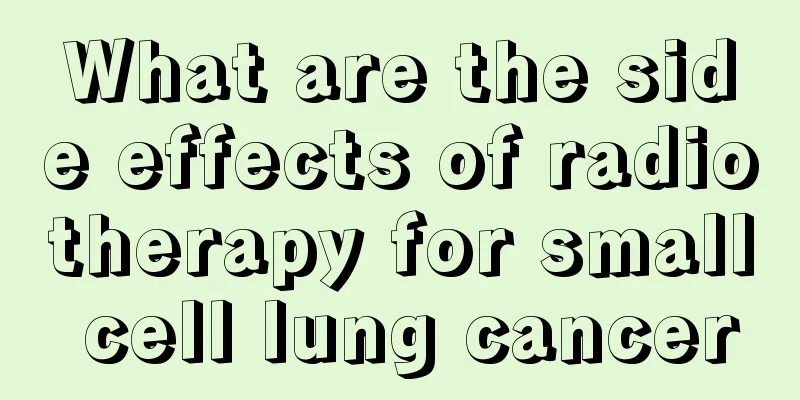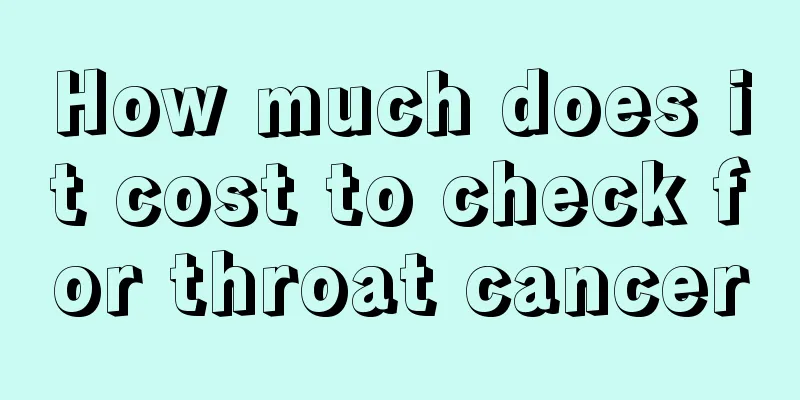Can pepper water cure prickly heat?

|
I believe that many people have experienced prickly heat in their daily lives. This is the most common acute inflammation in summer. It often occurs when the weather is very hot or when the weather alternates between hot and cold. Especially when people are more irritable, the amount of prickly heat that appears at one time will be very large, interfering with the surrounding skin tissue and affecting people's normal health. Therefore, you can use pepper water or many folk remedies to treat prickly heat in your daily life. What is prickly heat? Prickly heat, also known as heat rash and red miliaria, is the most common acute skin inflammation in summer. The appearance of prickly heat is due to excessive sweating in a hot and humid environment, while the evaporation of sweat is not smooth, resulting in blockage and rupture of sweat ducts, and sweat seeping into surrounding tissues. When prickly heat appears, it first manifests as redness of the skin, and later on it mainly manifests as small papules and blisters. It often occurs in summer and is more common in children with poor sweat regulation function and patients who are bedridden for a long time. Generally speaking, prickly heat occurs on the neck, chest, back, elbows, popliteal fossa, etc., while in young children it is more common on the head, forehead, etc. Generally speaking, when the temperature is high and the humidity is high, prickly heat is more affected and the skin lesions increase. When the weather turns cooler, the skin lesions will gradually subside. However, since prickly heat will cause severe itching or pain, and sometimes there will be bursts of hot burning pain, babies will always scratch the itchy area unconsciously after getting prickly heat. This practice may lead to secondary infection, folliculitis or abscesses. Therefore, when your baby gets prickly heat, parents should remember to take good care of the baby and provide a comfortable environment to prevent the situation from getting worse. It is worth noting that the prickly heat rash that newborns or infants usually suffer from is white prickly heat rash, which is different from heat prickly heat rash. White prickly heat does not cause pain or itching and can usually be absorbed on its own after 1-2 days. Parents should pay attention to observe the baby's condition so as to prescribe the right medicine. Symptoms of prickly heat There are several types of prickly heat: red prickly heat, white prickly heat, thick prickly heat and deep prickly heat. Among them, the prickly heat on newborns or infants is mostly small, transparent blisters, whitish in color, relatively shallow, and densely distributed, commonly known as white prickly heat. This type of prickly heat is mostly caused by children wearing too much, being exposed to strong sunlight, or suddenly sweating profusely after taking antipyretics. White prickly heat is generally painless and itchy, and does not cause obvious discomfort. It can be absorbed on its own after 1-2 days, leaving a small amount of white bran-like scales. The other three symptoms of prickly heat are as follows : 1. Red prickly heat Also known as red miliaria, it usually develops rapidly and is the most common prickly heat in babies. It often manifests as scattered, extremely itchy red macules and papules accompanied by tingling, burning or tingling sensations. Needle-cap-sized blisters or pustules can be seen on the top, and the skin lesions will merge. Symptoms develop days to weeks after exposure to heat and usually occur at sites of indirect friction, such as the antecubital fossa, popliteal fossa, trunk, abdomen, and groin. After discovering that the baby has prickly heat, in addition to medication, you can also use the following folk remedies : 1. Put 10 grams of peppercorns into an enamel jar, add 200 ml of boiling water, and cook on low heat for 5 to 6 minutes. After boiling, when it is slightly cooler and no longer hot to the touch, use a cotton swab dipped in the pepper water to gently rub the affected area. After 12 hours, the pus tip of the prickly heat will generally shrink and dry up. To consolidate the therapeutic effect, you can warm the remaining pepper water over low heat and then scrub the affected area again. After this treatment, all the prickly heat will disappear. 2. Use the cut cucumber or mashed loofah leaves to rub the prickly heat 2 to 3 times a day. You will see the effect after a few days. 3. You can also take 100 grams of stinking sycamore and 200 grams of purslane and boil them in water for external washing. |
<<: The efficacy and function of oyster shell
>>: The efficacy and function of Korean red ginseng
Recommend
The reason why spots appear on the face in middle age
There are many women who have fair and clean face...
How to quickly remove strawberry marks?
The so-called strawberry mark is the common kiss ...
How long can a woman with advanced lung cancer live
How long can a woman with advanced lung cancer li...
Clinical application of intestinal obstruction catheter
Intestinal obstruction refers to the obstruction ...
How to detect early symptoms of gastric cancer
How to detect early symptoms of stomach cancer? 1...
How to make your voice better?
Everyone's voice is different, but some peopl...
What to do if the stump recurs after cervical cancer surgery
Cervical cancer is a relatively common gynecologi...
The stool is golden and a little watery
When a child is young, it is not easy to judge th...
Why do you have a runny nose when you have a cold
The most recent symptom of a cold is a sore throa...
What to use to wash urethritis, the cleaning method is very important
Some friends who suffer from urethritis think tha...
What are the hazards of medical abortion to the human body
In our daily sexual life, if we do not plan to ha...
Fifteen small habits to keep away from diseases
1. Drink plenty of water Water not only saves peo...
Can bean sprouts be eaten overnight
Bean sprouts can generally be eaten overnight, bu...
Can Hamartoma be Prevented
Can hamartoma be prevented? This is a question th...
What is the reason for the pain in the left palm
Many people feel pain in the palms for no reason....









